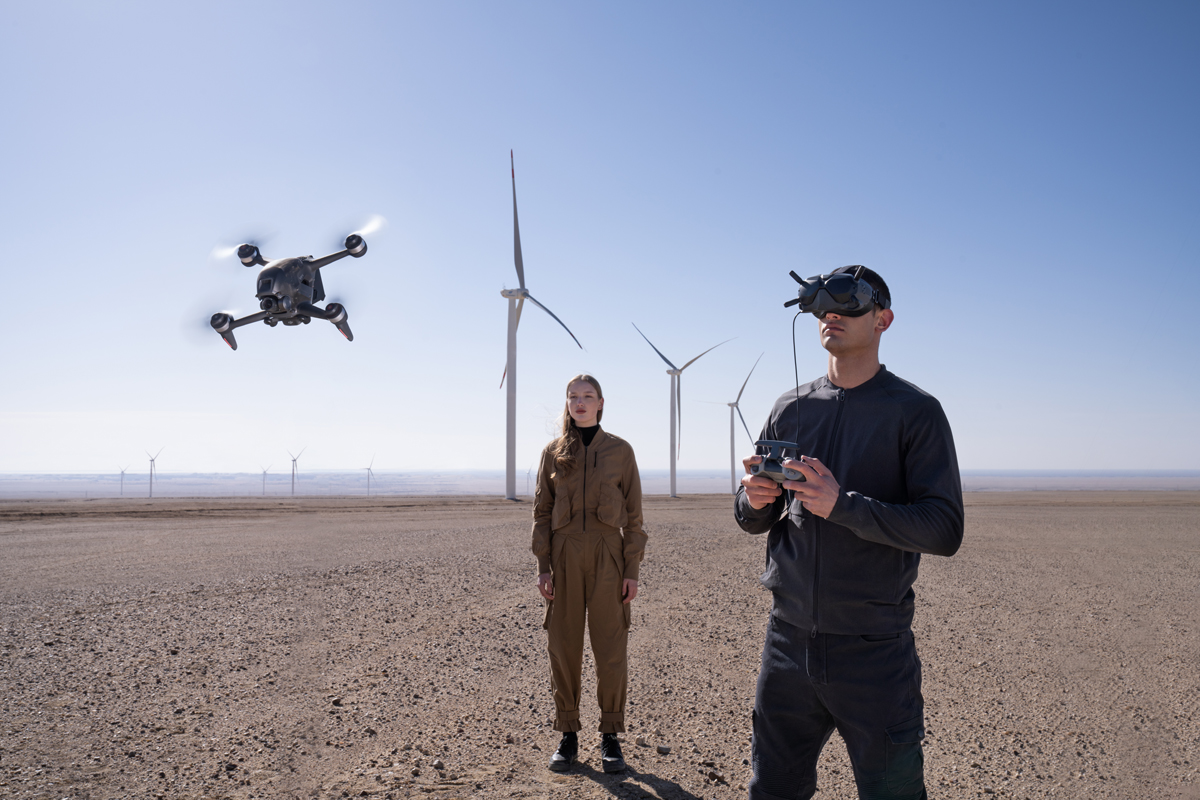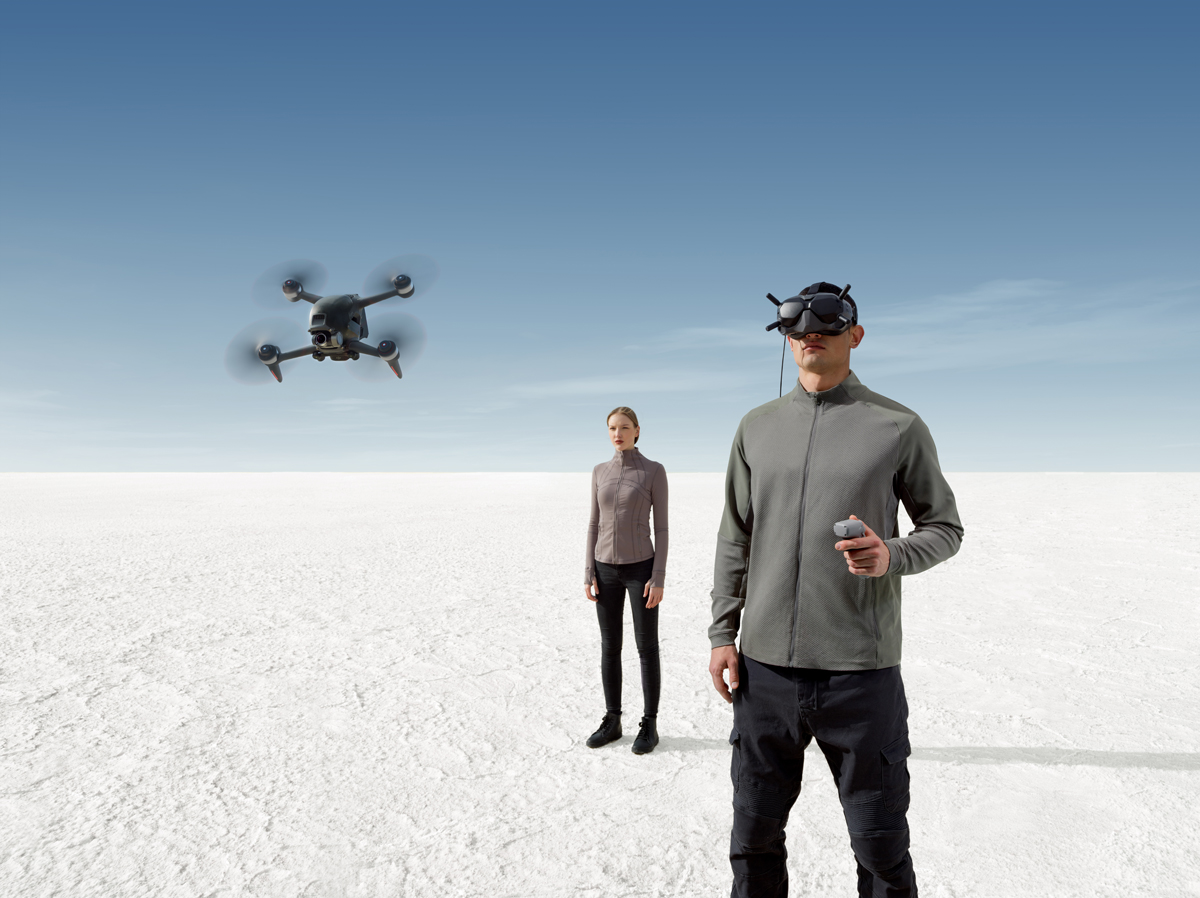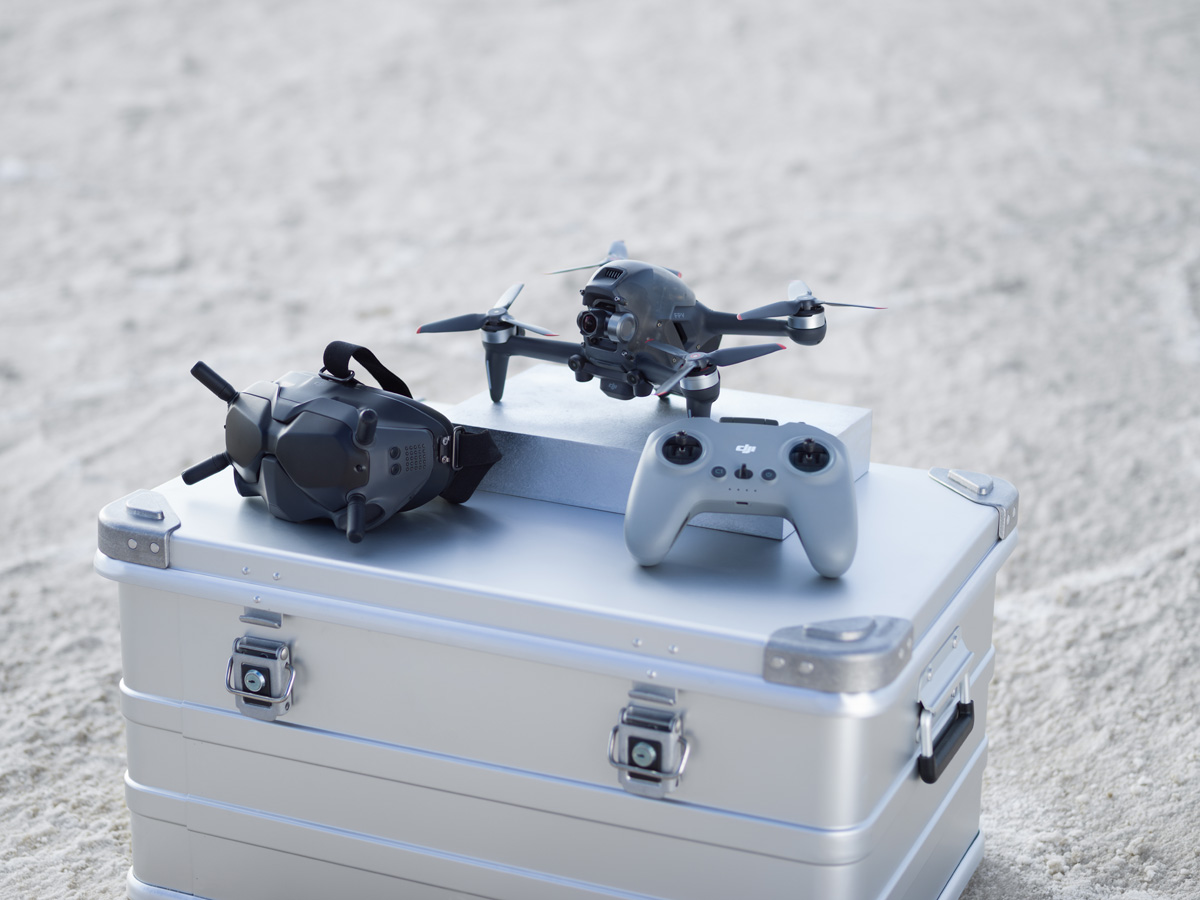As its name implies, users are able to control the new DJI FPV in first-person perspective via its included FPV Goggles and controller – both of which are updated versions with updated design and features. The drone itself comes with a 1/2.3-inch 12MP camera with a 150-degree field of view, which is mounted on a 1-axis gimbal. It is capable of capturing both stills and videos – the latter specifically at 4K/60p or 1080/120p, both at a rate of 120Mbps. Further enhancing its imaging capabilities is the onboard RockSteady electronic image stabilisation system that can also prevent a shutter rolling effect when flying at high speeds. Speaking of which, DJI claims that the FPV is able to achieve a top speed of 140kph and max acceleration of 0 to 100kph in just two seconds. In order to keep a stable and consistent connection between the device and its user, the new drone features the brand’s own OcuSync 3.0 (O3) technology which offers a range of 10km, auto-switching dual-frequencies, high bitrate of 50Mpbs, and “state-of-the-art” anti-interference methods. It is capable of approximately 20 minutes of flight time via its removable 2,000mAh LiPo 6S battery. Of course, the new drone packs plenty of usage and safety features as well. Besides controlling the device via its gamepad-like controller, users may also do so by utilising the optional motion remote which enables them to steer the drone based on the movement of their hand. The FPV also comes with GPS, obstacle avoidance sensors, an emergency stopping system, a return home function, and an ADS-B receiver system. The latter will alert users of any nearby manned aircraft within proximity of the drone. Additionally, the FPV also offers users the following first-person view and flight modes:
FPV View Modes
Standard low-latency HD mode: View your flight in 1440x810p in 60p with a wider 142° FOV or 50p with 150° FOV. In this mode, latency is as low as ≤ 40 milliseconds.Smooth mode: Pilots activate high frame rates for a more cinematic look to signal latency is decreased to ≤ 28 milliseconds. Resolution is 1440×810p 120 fps with a 142° FOV or 100 fps at 150° FOV.Audience mode: Shares the pilot’s perspective by connecting up to eight additional goggle sets so even onlookers can experience the same flight.
Flight Modes
Normal (N) Mode: N mode allows for pilots to operate will all obstacle detection sensors activated. It will automatically slow or halt the drone before it can collide with an object. In this mode, the maximum speed is 50 km/h (31 mph).Sport (S) Mode: Between N and M mode, S mode offers some of the dynamic movement capabilities that come with M mode along with some of the key safety features of N mode. It will still hover in place but obstacle avoidance sensors won’t activate. The drone can travel up to 97km/h (60 mph). The drone can accelerate from 0-100km/h (0-62 mph) in two seconds.Manual (M) Mode: This is the most advanced mode and only recommended once you’ve gotten comfortable with FPV flight. Hovering and obstacle avoidance sensors are disabled through the Emergency Brake feature will still work. DJI has created a Virtual Flight app to help pilots prepare to fly this mode, which allows you to flip and roll the drone.
The DJI FPV drone is now available for purchase from the official DJI web store and authorised retailers. The new product is offered in a standard combo priced at US$1,299, which includes the drone, remote controller, FPV Goggles and a battery pack. There’s also the Fly More Kit that includes two additional batteries and a dedicated charging hub for US$299. Meanwhile, the Motion Controller accessory is sold at US$199.
Local DJI authorised retailer March has listed the standard FPV combo at RM5,299, while the Fly More Kit and Motion Controller are priced at RM1,299 and RM799 respectively – a total of RM7,397 (minus shipping) if you’re looking to get all of these together. The store did not mention if the new products are available immediately or will arrive at a later date. (Source: DJI [Official website] / March [1] [2] [3])


